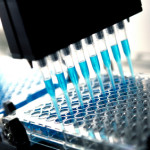Applications of Nanofiltration Membranes
Nanofiltration membranes are a relatively recent development, filling a void between two well-established technologies: reverse osmosis and ultrafiltration separation processes. One of the most exciting characteristics of nanofiltration membranes, is their ability to permeate monovalent ions, such as sodium chloride, through the membrane, while rejecting divalent and multivalent ions, such as sodium sulfate. This flexibility opens up many possibilities in the development of specialty process applications across multiple industries.
Synder Filtration is primarily focused on process applications, and so it was a natural fit to develop nanofiltration membranes to add to an already diverse product offering of ultrafiltration and microfiltration membranes.
NF APPLICATIONS BY INDUSTRY:

Dairy
- Concentration and Demineralization of Lactose – Nanofiltration membranes can concentrate and demineralize lactose at the same time, to varying degrees of purification as required by the process.

Food & Beverage & Plant Extracts
- Maple Syrup Concentration – As opposed to conventional boiling reduction methods for thick maple syrup, nanofiltration can be employed to reduce both costs and processing time.
- Gibberellins (plant/pharma) – Gibberellins are plant hormones used to promote plant growth and other developmental processes. Nanofiltration is a reliable method to increase total product yields by concentrating plant hormones such as gibberellins.

Textile & Dyes
- Dye Concentration – By allowing salts and water to pass through an NF membrane, nanofiltration can be a practical alternative for the concentration and desalination of dyes used in the textile industry.
- Dye Penetrant Removal – Nanofiltration is widely applied in the recovery of dye in order to meet discharge regulations after penetrant testing with fluorescent dyes.
- Optical Brightening Agent (OBA) Concentration & Desalination – Optical brightening agents are able to enhance the appearance of colors by increasing the amount of light reflected. To reduce operating costs, nanofiltration can be applied to concentrate the optical brightening agent for reuse in the textile industry.

Industrial Processes and Wastewater
- Seawater Sulfate Removal – Nanofiltration membranes have the ability to selectively remove sulfate found in seawater, important in preventing scaling in oilfield waterflood operations.
- Dissolved natural organic matter removal from surface water – Natural organic matter (NOM) can be removed from surface water using nanofiltration to aid in the production of NOM-enriched water or for industrial process water.
- Landfill Leachate Treatment – As a lower energy alternative, nanofiltration can be used to treat certain landfill leachates by removing pollutants, decreasing TOC and COD levels, and lowering turbidity.
- Brine Recovery – NF membranes can reject high amounts of sulfate and allow sodium chloride ions to pass through the membrane, offering an viable solution for brine recovery in industrial processes.

Biotech/Pharmaceutical
- Antibiotics production – Nanofiltration membranes have been an attractive separation process technology employed in separation, concentration, and production of hormones and antibiotics.
- Blood serum – Once blood serum and blood plasma have been separated, nanofiltration can be used to capture fibrinogen and other clotting compounds.
CASE STUDY
Applications
questions? Fill out this form. We’ll contact you within 24 hours!
Resources
MEMBRANE RESOURCES
- Definition of a Membrane
- Membrane Materials: Organic vs. Inorganic
- Pressure-Driven Membrane Filtration Processes
- Concentration Polarization in Pressure-Driven Processes
- Degrees of Membrane Separation
- Flux Behavior in Membrane Processes
Module Configurations & Processes
-> View all membrane resourcesTUTORIALS









